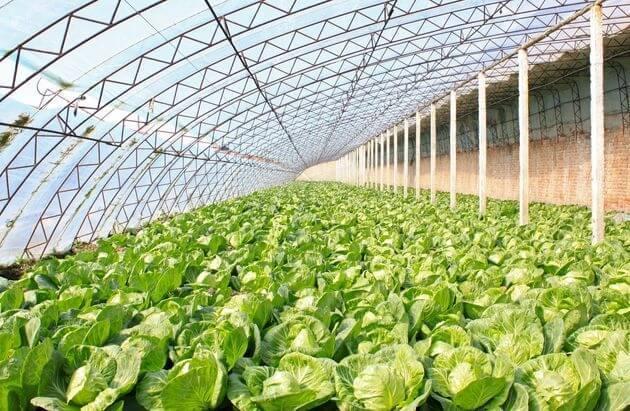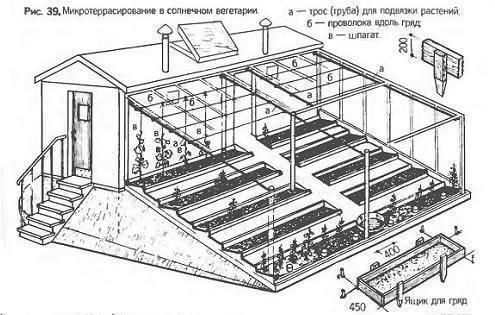884
How to build a solar vegetary Ivanova

To improve the productivity of horticulture crops and reduce the time they mature vacationers often used greenhouses and greenhouses. Given that in most parts of Russia harsh and temperate climate, long winter and short summer, then without these structures on the site will not be enough.

There are many types of such facilities. But the most comfortable microclimate provides solar vegetary Ivanova.
This new generation of greenhouses using solar energy to the maximum that can be done with his own hands.
If you decide to organize in their area vegetary, the plants in it will not receive 5 - 6% of the sun's energy, as in conventional greenhouses, and up to 30%, which will guarantee a good harvest
. History vegetariya
Physics teacher Alexander Ivanov vegetary invented back in the 50s of the last century. Solar greenhouses not only allowed to grow cucumbers and tomatoes, but even tangerines, lemons, pineapples. At the same time Ivanov, it is not heated since February till November.

The basic principle is as follows: the surface sloping solar energy falls in larger quantities. Therefore, by using such natural inclinations of their land for the construction vegetariya can be several times to increase the yield.
However, Ivanov demanded a new idea for further development on the following points:
The penetration of solar energy in a greenhouse in a much larger amount.
Saving vegetarii accumulated carbon dioxide and water, which conventional greenhouses with ventilation evaporate.
Conserve heat to reduce sudden changes in temperature during the day and at night.
For this greenhouse vegetary has been changed: the north side it was raised, so that was obtained by the slope to the south about 20 degrees. As a result of the sun's rays began to fall perpendicularly, not slide, bouncing off the roof. The earth and the plants received all solar energy.
How does the sun vegetary?
The classic version - in the form of a pent greenhouses, built on the south or south-eastern slope at an angle of 15-20 degrees. This becomes a hothouse storage of solar energy. The sun's rays, once in a greenhouse, heated and illuminate the plants and the ground and the track, and all designs. Together, they begin to emit the received energy. If the summer sun energy intake vegetary increases 4-5 times, in the winter, and mornings and evenings - in the 18-21 times. Sun below - more energy
. If there is no slope natural origin, it may be specifically pour. A south facing vegetariya need to deepen and to dig where the barrel or tub in an artificial pond. This body of water will take away excess moisture from the flower beds, and serve to accumulate heat reservoir.
Features Built

The wall on the north side should be the capital, insulated, opaque. The height of the walls 2, 5 meters. It is better to paste over its reflective film or whitewash. It may be adjacent to the house, outbuildings, with other buildings. Thus, the northerly winds will not cool the greenhouse.
Flat, without kinks, transparent roof is erected parallel to the slope. The sun's rays will be distributed evenly throughout the vegetariyu.
Coverage of the roof and walls (except north) must be made of glass or polycarbonate.
At a depth of 35 cm under a layer of fertile land is laid thin-walled tubes with a diameter of 110 mm or at least half-wave slate, arranged shalashika. The upper ends of tubes connected in the transverse collector. From it derive the pipe with electric roof. The fan will help the movement of warm air, which warms the soil, and return back to the greenhouse chilled. At night, conversely, the cooled air is heated by moving the pipes, and then, going, increases in temperature vegetarii. This will maintain high temperature stable up to 20 degrees. If winter's freezing to -12 degrees, the vegetarii day will heat up to 18 degrees, and at night to 12. At this temperature, you can grow herbs, citrus sleep during this period. If vegetarii there are plants that require more heat, sufficient to establish it "stove." This system not only promotes good warming up in the winter, but in summer cooling.
If you want the fruit, vegetables and berries are grown you all year round, you will need to lengthen the daylight lamps.
Vegetariya area, built on the site, should be about 20 sq.m. If you later want to expand it, it is necessary to attach to it more of the same block on the west or east side. Thus the partition between the blocks leave. It is also possible for each culture to create a closed space with its own microclimate, dividing partitions vegetary film.
Independent power supply: an inverter or generator
Resentment and resentment - what's the difference?























